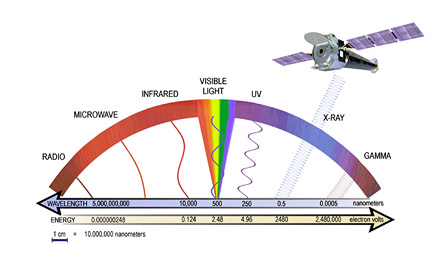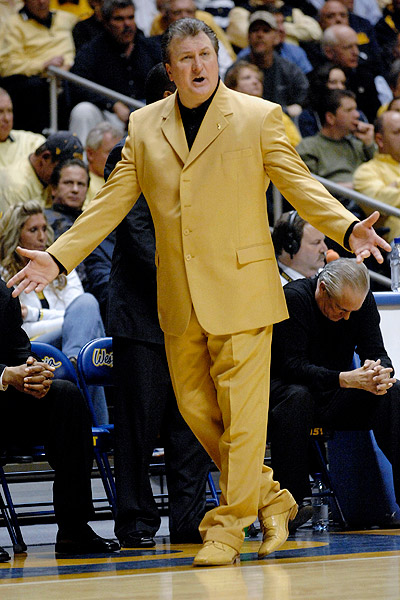1. Forsythia floating away, 2. citrus, 3. tulips, 4. Yellow Warbler signing, 5. Yellow flower - Backlit, 6. Crocus / クロッカス, 7. Yellow Rose, 8. Yellow sunshine, 9. Ella, 10. Tabletop Daffodils, 11. yellow butterfly, 12. Yellow
OK, I'm doing it again: starting another series of exploration. This time? Color!! And obviously we're starting with the color yellow. (No, I didn't forget December's birthstone, last in that series. How could I?) Yellow is one of my top three favorite colors, tied for first with pink and orange. Anyway, before we splash around in yellow, let's take a very brief peek at the study of color.
 |
| The visible light spectrum ranges from short-wavelength violet to long-wavelength red. Photons of light from the violet end of the spectrum have the highest energies and the highest frequencies, while red photons have lower energies and lower frequencies. Beyond the range of our vision are the longer wavelengths ("beyond red") of infrared, radio, TV, and microwave as well as the shorter wavelengths ("before violet") of ultraviolet, x-ray, and gamma rays. Credit: Artwork by Randy Russell. Image via Windows2Universe |
 |
| We actually see only a tiny fraction of the electromagnetic spectrum. Image via NASA |
Color psychology is concerned with how color impacts our mood, behavior, and feelings. Seeing red, got the blues, green with envy, yellow bellied... The influences of color were first documented during the Middle Ages and explain the frequent use of blues, greens, and violets in chapel stained glass to create a peaceful and contemplative setting. Creative types have known for centuries that color can impact and convey feelings, signal action or lack of action, and create psychological moods. Color can change your metabolism or influence your blood pressure, even make you feel hungry. This effect is called chromodynamics. I have an artsy-fartsy professor friend who likes to crack on people who determine whether or not a painting is "good" by its color. "It matches my couch", he quips sarcastically. While I would never say that color alone determines the artistic merit of a painting, I do believe that our personal response, particularly our initial response, to artwork can be very much impacted by our own color preferences and prejudices. I am more likely to be drawn across the room by very clear, bright, colorful pastels....
 |
| Image via Pelfusion |
... than by muted, earthy teals, browns, and gray-blue colors.
 |
| Image via Times Union |
Color perception and preference is generally personal and subjective but also has, at times, universal meanings. Warm colors- reds, oranges, yellows- can elicit feelings of comfort and warmth as well as signify anger or danger. Cool colors- blues, greens, purples- can be calming but may also indicate sadness or indifference. Our responses to colors can be cultural as well. White, in Western societies, signifies purity while in Eastern cultures it is associated with mourning. Color can even be associated with cultural and economic trends. Silver has long been the most popular color for vehicles and has traditionally been associated with prosperity. However, around 2008, the popularity of silver vehicles began to wan as more and more people felt the impact of the economic downturn here in the US. White is now the number one auto color but brown is making a strong push ahead. Traditionally an unpopular color associated with earth, mud, and dirt, the explosion of Starbucks and the coffee shop culture has given brown a jolt, so to speak. There are fascinating studies out there with findings that explain thing like why not only restaurants are often heavy on the red decor (stimulates appetite) but casinos as well (gamblers make riskier bets while seated under red lights than say blue lights- hence all the red neon in Vegas).
 |
| Image via Time Out |
So every now and then, here in the jungle, we'll explore a color, it's uses and impacts, and any other interesting tid-bits I can dig up for you. Though I have long been interested in color theory and how color can affect us, I am not an expert by any stretch of the imagination (no matter how colorful your imagination may be). Some areas of color therapy such as colorpuncuture, color-energy vibration and balancing, and so forth, can get to be "more alternative" than I generally ascribe to (I'm just not a chakra kind of gal) but I do find validity in light therapy for seasonal affective disorder and in photobiology. Anyway, we'll take a broad general look at color and see what we can discover. Which bring us back to yellow .....
 |
| Image by brendan c via Flickr |
The color yellow is most readily associated with cheerfulness, sunlight, happiness, laughter, and warmth. It's a good color to kick off our color journey as spring begins. It has been shown to increase metabolism, stimulate mental processes and the nervous system, activate memory, and encourage communication. A person surrounded by yellow feels more optimistic since it stimulates the release of serotonin, the "feel good" chemical, in the brain. It increases creative thoughts, which is why legal tablets are yellow, and golden yellows enhance feelings of a positive future (again, thanks to serotonin). It is associated with confidence, self-esteem, extroversion, emotional strength, intellect, and friendliness. Interestingly, studies have shown that stores painted in yellow experience less problems with theft.
In advertising, yellow is often used to highlight the scrumptiousness of buttery foods and is associated with rejuvenation, such as rejuvenating beauty products. It is often used to provoke thoughts of a happy cheerful childhood and so is used a great deal in making and marketing children's toys and other items. Men, however, tend to view yellow as cheap and so you rarely see a yellow Mercedes or business suit, though one never knows.
 |
| Sorry, Coach Hugs, but I had no choice. Image via ESPN |
Yellow is the first color noticed by the human eye and so is used for things like taxi cabs, warning signs, school buses, traffic signals, and hazard warnings. Though for years yellow ribbons have been associated with hope as we wait for our loved ones to come home from deployment, it has been used at times in medical settings to indicate quarantine. The yellowjack is a flag flown by ships at sea to indicate they are under quarantine. The isolation gowns and signs at the hospital where I work are yellow. It is often associated with cowardice (yellow-bellied), decay, lack of cleanliness, illness (think jaundice), and aggressiveness. Dull shades of yellow are thought to increase fear and anxiety. In its more intense hues, yellow has the opposite effect than traditionally thought. Yellow, particularly at the more vibrant end of the spectrum, can be very fatiguing to the eye and over-stimulating to the brain. It can lead to frustration and anger. Studies have shown that people lose their temper more in intensely colored yellow rooms and that babies cry more in intensely yellow rooms. In light of that, I'm not sure why the pediatric floors where I work are painted the most garish, eye-shaking yellow you have ever seen in your life.
 |
| Royal Palace, Phnom Penh, Cambodia |
Yellow around the globe (from Sensational Color)
The Chinese have placed a predominance upon the color yellow not seen elsewhere in the world. It was the color of emperors during both the Ming dynasty and the Qing dynasty. Know why 75% of the pencils sold in the US are yellow? During the 1800s, the best graphite in the world came from China. American pencil makers wanted a special way to tell people that their pencils contained Chinese graphite. In China, the color yellow is associated with royalty and respect. American pencil manufacturers began painting their pencils bright yellow to communicate this 'regal' feeling and association with China. In Thailand, yellow is the color identified with King Bhumipol Adulyadej.
In India, yellow is the color of the Vaisya caste, or farmers, and is the color Hindus wear to celebrate the Festival of Spring. During the tenth century in France, the doors of traitors and criminals were painted yellow. During the 1357 Japanese "War of Dynasty," warriors wore a yellow chrysanthemum as a pledge of courage. In Aztec culture, yellow symbolized food because it was the color of corn, the primary food of the Aztec people. Yellow signifies “sadness” in Greece’s culture and “jealousy” in France’s culture.
1. Pineapple, 2. Corn on the Cob, 3. How to present a mango., 4. Yellow Watermelon, 5. yellow bell pepper, 6. I licked; she bit right in., 7. lemon, 8. Squash, 9. Bananas
If yellow is your favorite color you are mentally adventurous, searching for novelty and self-fulfillment. Yellow usually goes with a sunny and shrewd personality, with a good business head and a strong sense of humor. It is the color of intellectuality and all things to do with the mind. Yellow folks are usually clear and precise thinkers who have a good opinion of their own mental capacities and have lofty ideals. They may at times tend to shun responsibility, preferring freedom of thought and action and are impulsive at times. Yellow lovers are said to be creative, artistic, and sociable people with a dramatic imagination. You tend to hide your emotions, putting on a brave face in times of adversity.
1. yellow monarch 1, 2. Three-Spot Grass Yellow!, 3. Shades of yellow, 4. The yellow sneakers, 5. Yellow Bicycle, 6. yellow tulips upshot 0116, 7. Yellow, 8. yellow, 9. Pineapple
So there it is, my dear butterfly friends, our first color investigation. As I mentioned, we will still look at our last birthstone, December, very soon. The color posts will be sporadic, as mood moves me, but I do have plans for another birthday-related series. So stay tuned and we'll forge ahead to new discoveries!
Thanks for visiting today. Hope your spring is full of sunny yellow fun!
 |
| Yellow coster butterfly. Please let me know if I can credit you with the photo. It might be my next tattoo. |





I am going to so love this new color series! As has been the case with the birthstones series, you carefully and thoroughly research and then present all you have found in a beautiful, intelligent and thought provoking learning experience.
ReplyDeleteFrom the bottom of my heart, THANK YOU!